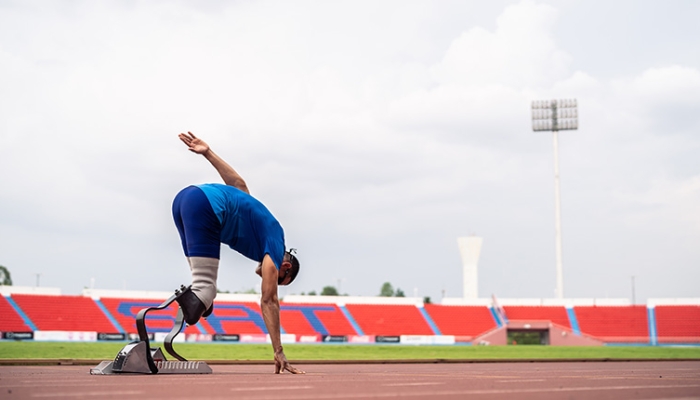Winning comms: Who made the Paralympics PR podium?
This year’s Olympic comms efforts got plenty of positive reaction from the PR industry and the public, but how did PR teams at the big brands do at the 2024 Paralympics?
Here are thoughts from PR pros who were watching (and taking notes) at home.
Making the podium for gold-medal-tier comms…
…Channel 4 dropping its ‘Super. Human’ theme from the previous Games for its ‘Considering What?’ campaign. The move was considered a major win for many of those watching at home, and across the PR industry.
Where the Tokyo 2020 campaign (which had won industry awards and accolades at the time, including the Cannes Lions Grand Prix) had been construed by critics as patronising, 2024’s effort was instead direct, hard-hitting, and propulsive.
‘It’s hard to look past the “Considering What?” campaign, which in my opinion really hit the mark, rightly positioning Paralympians as world-class athletes, rather than people ‘overcoming’ their disabilities,’ believes Matt Peden, managing partner at sport specialist creative comms agency Hatch.
‘Dropping the previous creative was a big move, but I think it paid off.’
For a mix of competition with cosy nostalgia was the International Paralympic Committee’s spot We All Stand Together, which utilised the 1984 children’s song from Paul McCartney. A big hit with many school children at the time, it was a canny pick for getting the attention of the older Millennials out there.
‘I was really impressed with how the IPC launched their central theme for the Games, which showcased the competitive nature of the Paralympics,’ added Matt.
‘TikTok have also done fantastic work pre and during the Paralympics, really demonstrating the uniqueness of their platform and embodying the spirit of the Games really well.
‘I don’t think there are many examples of campaigns that have missed the mark, more of brands not giving the right amount of attention to the Paralympics. Adidas, for example, in my opinion have been relatively quiet when it came to the launch of the Paralympics. If you look through the partners of ParalympicsGB (such as John West and Dreams), all have been very active in their own space, which was great to see.’
For other big brands associated with the Games, Nike won plaudits in many PR industry publications. For good reason, believes Tristan Van Den Berg, account manager at Spa Communications:
‘I found ‘Winning is Winning’ very compelling, as it focused on athlete empowerment and challenged perceptions of ability. The success primarily lies in authentic storytelling, using athletes’ voices to drive the narrative.
‘On the other hand, campaigns that rely solely on tokenistic representation, without offering depth or engagement, often miss the mark – they fail to create a lasting impact because the focus feels superficial.’
And could do better in future goes to… the lack of hype around the Paras compared to the Olympics
‘We have made significant progress since the Paralympics first began, and it is encouraging to see daily coverage of the games. However, we are still far from achieving the same level of visibility and excitement for the Paralympics that the Olympics receive,’ says Kully Dhadda, founder and CEO of digital communications agency Flame.
‘Similar to the growth of women’s football, the Paralympics requires consistent prime-time exposure both on the TV and in the mass media to reach a wider audience.’
Could a lack of hype for the Paras simply be related to scheduling? Perhaps, believes Matt.
‘The fact the Paralympics is post-Olympics will always be a slight deterrent – it can feel like it’s an afterthought which goes against messages from governing bodies and brands. If it was switched, with the Paralympics taking place first, then the natural comparisons made throughout might not be as strong.’
However the Paraympics is scheduled, there is clearly an existing problem with visibility in adland when it comes to disability. Drawing attention to this during the Paras was a short film from Channel 4 and Bupa, produced with Purple Goat and Sassy+, which asked: ‘Where are all the disabled people in ads?’
Inclusion for disabled people, including those that will be competing in future sporting events, needs to be a year-long priority for PR, marketing, and ad teams:
‘To give the Paralympics equal coverage in future, brands need to invest more in year-round visibility for Para-athletes and collaborate with media to keep the conversation alive outside of event cycles,’ believes Tristan.
For what kind of PR campaigns could help boost attention for the Paras in future years, Kully recommends the reliable comms tool of human-led stories:
‘Efforts should be made to create compelling stories around the athletes and events, engaging audiences through human interest stories, behind-the-scenes content, and interactive social media campaigns – sometimes an athlete’s journey is just as interesting as the sport itself.
‘Broadcasting organisations and sponsors could collaborate to ensure the Paralympics are marketed just as heavily as the Olympics, creating equal anticipation and hype – I can personally see a huge gap for someone to own the games the same way as how Nike unofficially took control of the 1996 Atlanta games.
‘By showcasing the full spectrum of what the Paralympics have to offer, we not only draw in new viewers, but also inspire future athletes for both games.’
Want to connect with journalists who’ll be reporting from upcoming sporting events, and track your coverage? Try Vuelio’s Media Database and Media Monitoring.






Leave a Comment